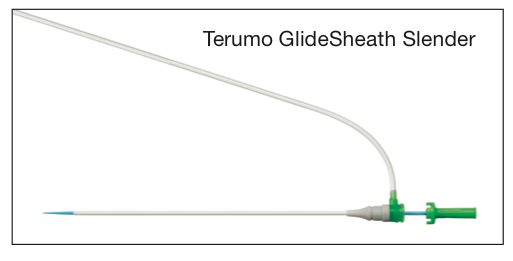Multicenter Study Finds Cost Savings Associated With Coronary Interventions Via Transradial Access Exceed $800 Per Procedure Versus Transfemoral Access
Researchers say transradial procedures could help U.S. hospitals realize nearly $50 million in annual cost savings with only a modest 10% increase in transradial procedures
A new study finds U.S. hospitals could experience nearly $50 million in cost savings annually by performing percutaneous coronary interventions (PCI) through the radial artery, rather than the femoral artery. Published online, ahead of print, in JACC: Cardiovascular Interventions, a journal of the American College of Cardiology, the study was supported by an unrestricted research grant from Terumo Medical Corporation.
The study population consisted of a retrospective cohort of more than 7,000 patients undergoing PCI at five U.S. medical centers from January 1, 2010, to March 31, 2011. The study was designed to evaluate the costs of using transradial access intervention (TRI) and transfemoral access intervention (TFI). Findings show that TRI was associated with a cost savings exceeding $800 per PCI procedure relative to TFI. Most of these cost savings were driven by reduced patient length of stay after the procedure and reductions in bleeding complications.
designed to evaluate the costs of using transradial access intervention (TRI) and transfemoral access intervention (TFI). Findings show that TRI was associated with a cost savings exceeding $800 per PCI procedure relative to TFI. Most of these cost savings were driven by reduced patient length of stay after the procedure and reductions in bleeding complications.
“Transradial access is clearly an efficacious medical treatment strategy. Many studies have demonstrated the clinical benefits of transradial access, such as reduced bleeding and substantially lower patient length of stay,” said Steven P. Marso, MD, Professor of Medicine, University of Missouri, Kansas City at Mid America Heart Institute, Saint Luke’s Health System, and principal investigator. “However, our study takes it one step further by demonstrating an overall hospital cost savings exceeding $800 per PCI. These savings increased to $1,621 in patients at higher risk for bleeding. Annually, a hospital performing 1,000 PCIs could save an additional $80,000 to $160,000 for every 10 percent increase in their transradial procedures.
GlideSheath Slender Launched by Terumo
“We are expanding our product portfolio by launching the GlideSheath Slender, a hydrophilic-coated introducer sheath specifically designed to deliver larger devices through a smaller radial access,” said Chris Pearson, Vice President, Marketing, Terumo Interventional Systems. “The smaller insertion profile of the product makes it an optimal solution for smaller arteries. This will allow more patients to enter the transradial treatment pathway for PCI.”
The new Terumo GlideSheath Slender Hydrophilic Introducer Sheath offers:
- Thin-wall technology reduces the outside diameter by 1 French (Fr) while maintaining an inner diameter equivalent for compatibility with devices up to 6 Fr.
- Less penetration resistance at the puncture site than conventional sheaths.
- Allows physicians to quickly perform diagnostic and interventional procedures without upsizing to a larger sheath.
- Incorporates Terumo Glide Technology for ease of insertion and removal.
Reference
- Amin AP, House JA, Safley DM, Chhatriwalla AK, Giersiefen H, Bremer A, et al. Costs of transradial percutaneous coronary intervention. JACC Cardiovasc Interv. 2013 Aug; 6(8): 827-834. doi: 10.1016/j.jcin.2013.04.014. Epub 2013 Jul 17.










